Tired of Crispy Calatheas? The Real Reason Your Plant is Dying (And How to Fix It)
I’ve been working with tropical plants for what feels like a lifetime, both in big commercial greenhouses and with my own collection at home. And in all that time, I don’t think I’ve seen a plant more misunderstood than the Calathea. People call them ‘divas’ and ‘drama queens,’ but honestly, that’s just not fair. After growing hundreds of them, from the tough-as-nails Rattlesnake to the notoriously delicate White Fusion, I can tell you they aren’t difficult. They’re just specific.
In this article
- Why Do Their Leaves Move? (It’s More Than Just a Cool Trick)
- Watering: Where Most People Go Wrong
- The Right Soil Mix (Bagged Soil Won’t Cut It)
- Light & Humidity: The Final Pieces of the Puzzle
- Let’s Talk About Food: The Deal with Fertilizer
- Which Calathea Should You Get? A Realistic Guide
- Troubleshooting Common Problems
- Keeping Pests Away
- A Final, Important Note on Safety
- Galerie d’inspiration
Think of it this way: they’re constantly telling you what they need, but you have to learn their language. Almost every problem comes from a basic misunderstanding of where they come from—the floor of a tropical rainforest. They aren’t succulents, and they aren’t hardy ferns. Once you stop trying to make them something they’re not and start giving them what they actually want, they become some of the most stunning and rewarding plants you can own. Let’s walk through what actually works, based on years of trial and (lots of) error.
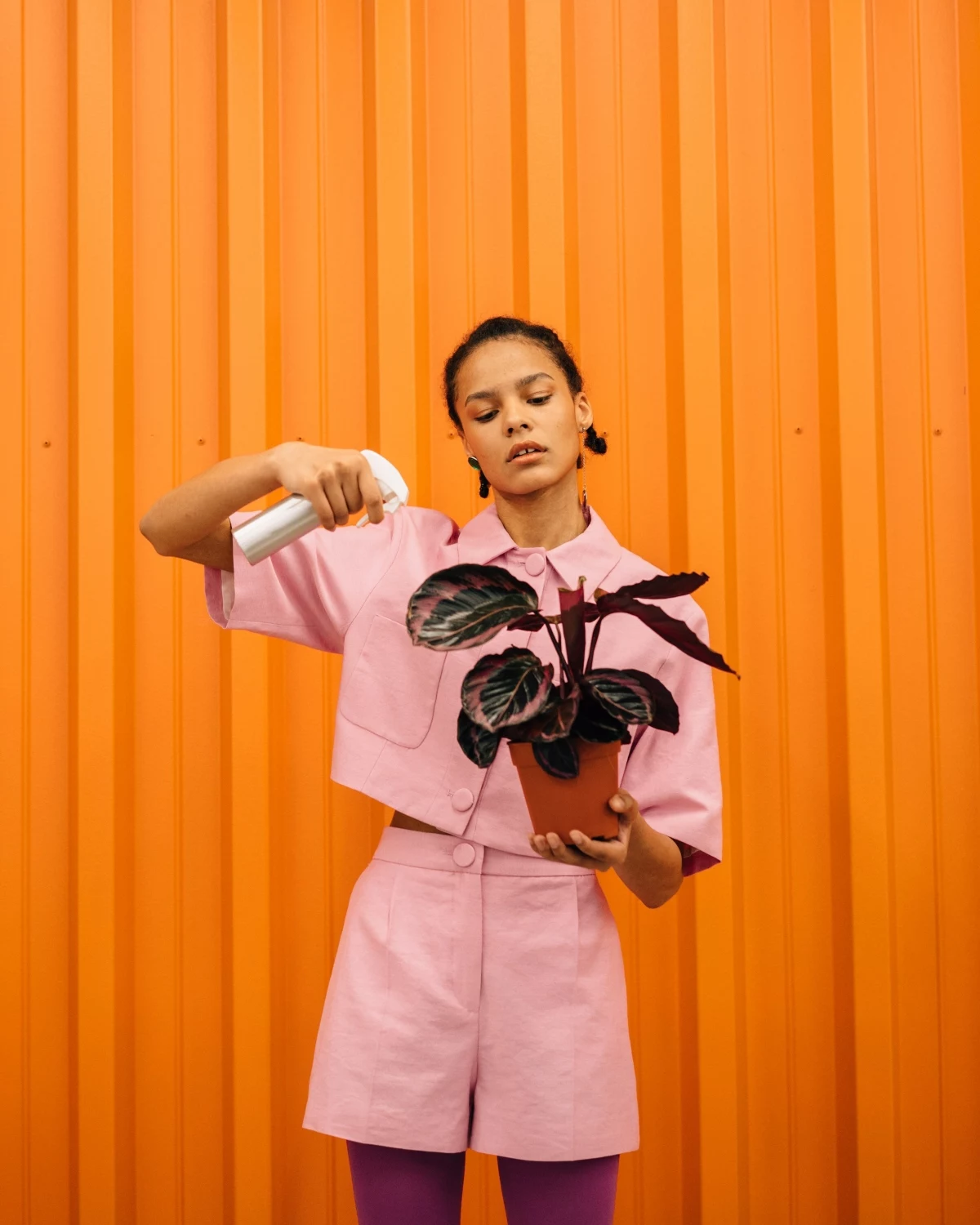
Why Do Their Leaves Move? (It’s More Than Just a Cool Trick)
Before we even think about watering, you have to appreciate their most famous trait: the moving leaves. It’s often why people call them ‘prayer plants.’ This daily up-and-down movement is driven by a small, joint-like organ at the base of each leaf stalk called a pulvinus.
During the day, this little joint is full of water, pushing the leaves out to catch all that nice, dappled light. At night, the water pressure changes, and the leaves fold upward. It’s a clever evolutionary trick to funnel moisture and condensation down the stems to the roots. Why does this matter to you? Because that pulvinus is your plant’s dashboard warning light.
A healthy, happy Calathea will have crisp, noticeable movements every day. If the leaves stop moving, or the dance becomes slow and sluggish, that’s your first sign something is wrong—usually with your watering routine—long before the leaves start to look sad. Paying attention to this daily rhythm is the best habit you can possibly develop.
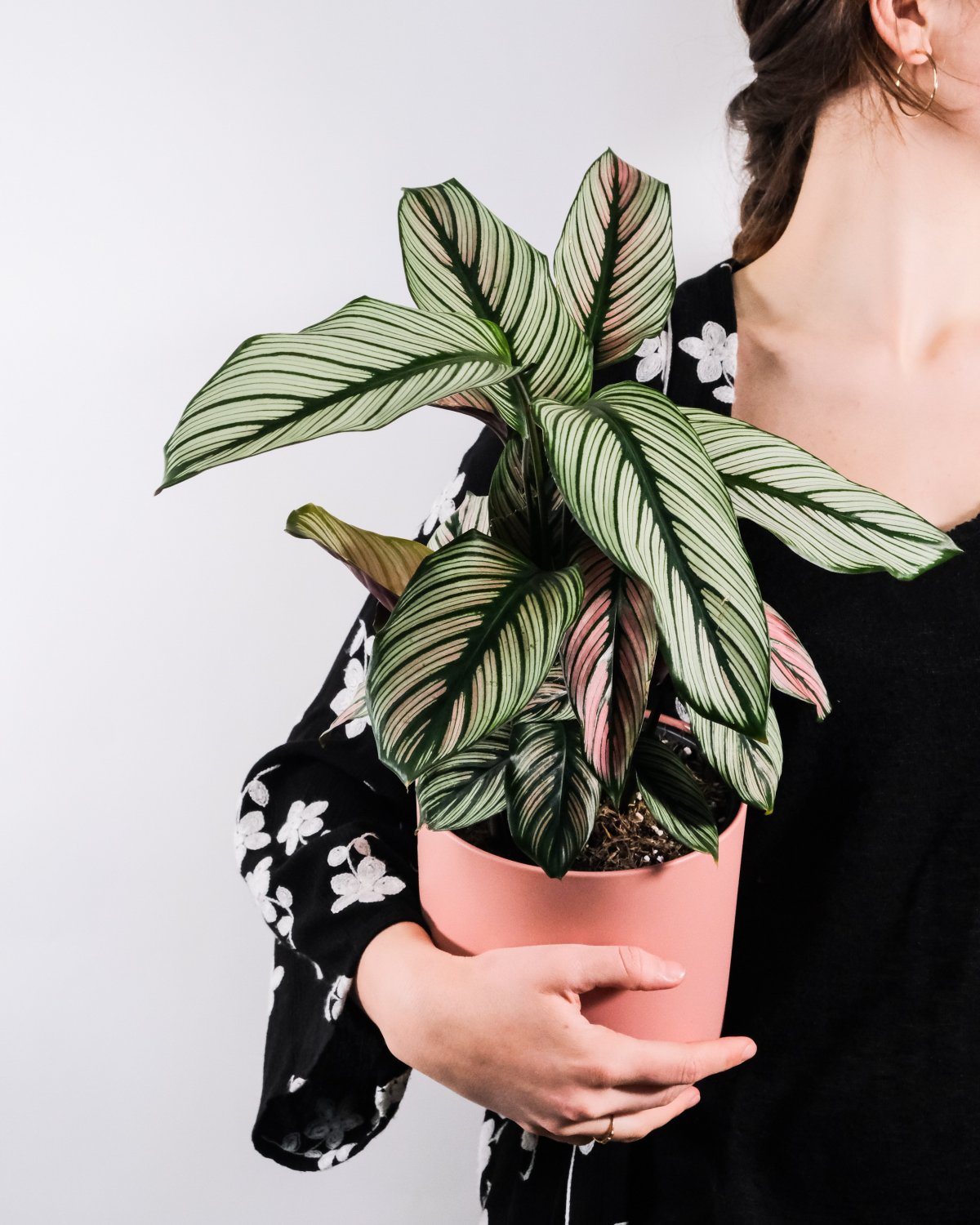
Watering: Where Most People Go Wrong
If a Calathea dies, there’s a nine-out-of-ten chance water was the culprit. It’s not just about how often you water; it’s about the quality of the water itself. Getting this right is everything.
Your Tap Water is Probably the Problem
In the wild, Calatheas get pure rainwater. Our tap water? It’s treated with stuff like chlorine and fluoride to keep us safe. Unfortunately, these minerals build up in the soil over time and slowly poison the plant, blocking it from absorbing water and nutrients. The result is those classic crispy, brown leaf edges that drive everyone crazy.
I learned this the hard way with a gorgeous, round-leafed variety. The leaves were perfect until they started getting these brittle brown edges, despite my perfect watering schedule. Turns out, my city had upped the chemicals in the water, and it was taking a toll.
So, what are your options? Let’s be real about what works:
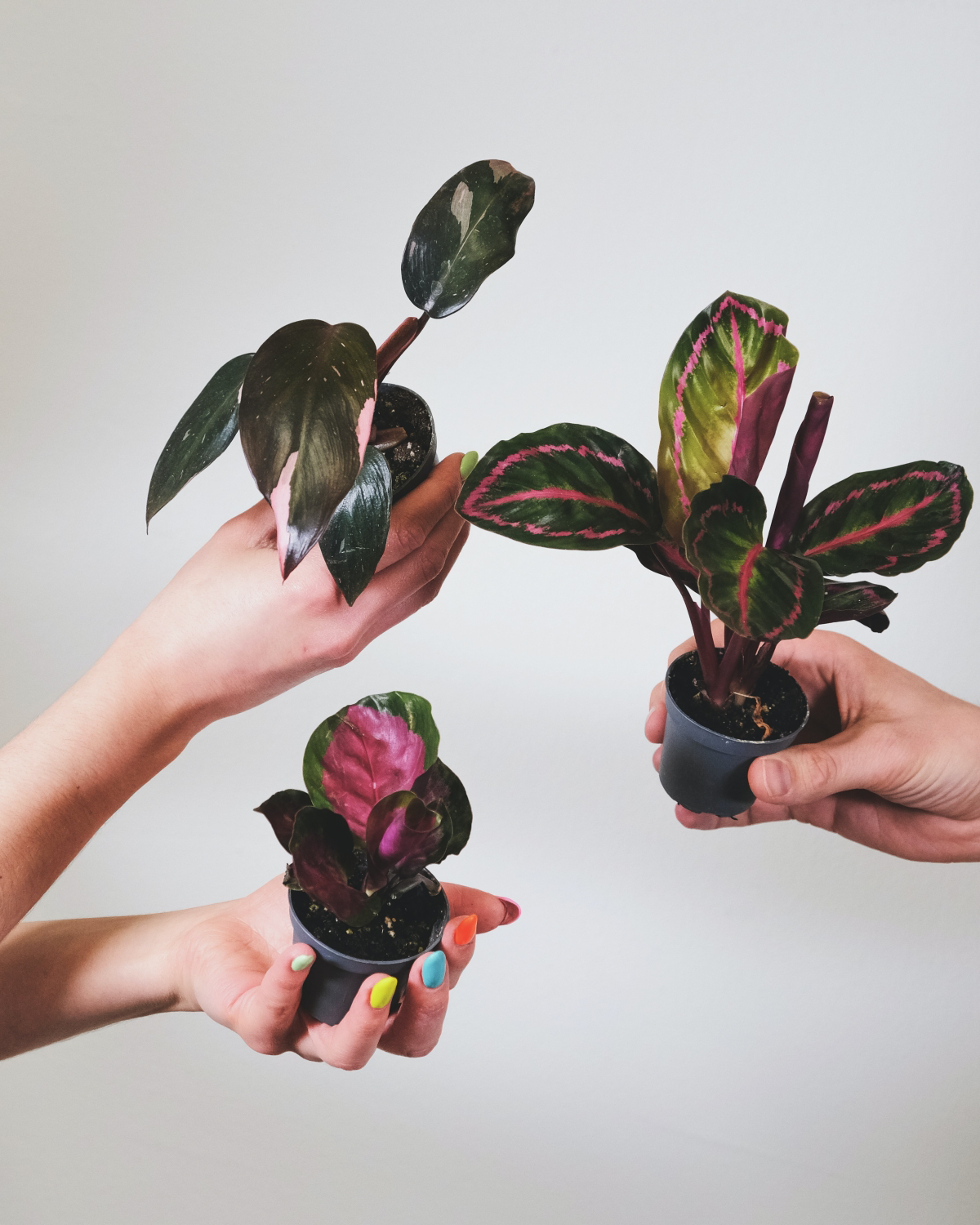
- The Gold Standard: Rainwater. It’s free and it’s exactly what the plant wants. If you can, keeping a barrel to collect it is a game-changer for all your sensitive plants.
- The Most Reliable Alternative: Distilled or Reverse Osmosis (RO) water. This is purified water with all the junk removed. You can grab a gallon for about $1-$2 at any grocery store. It’s a small investment for a plant that doesn’t have crispy edges.
- A Decent Stopgap: A good carbon filter, like a Brita or one on your faucet, can remove chlorine. However, most basic filters won’t touch fluoride or chloramine. Check the filter’s specs to be sure.
- The Last Resort (and often ineffective): Letting tap water sit out for 24 hours only works for chlorine, which turns to gas and evaporates. It does absolutely nothing for the more common additives like chloramine or fluoride. Honestly, with modern water treatment, this method is pretty much outdated.
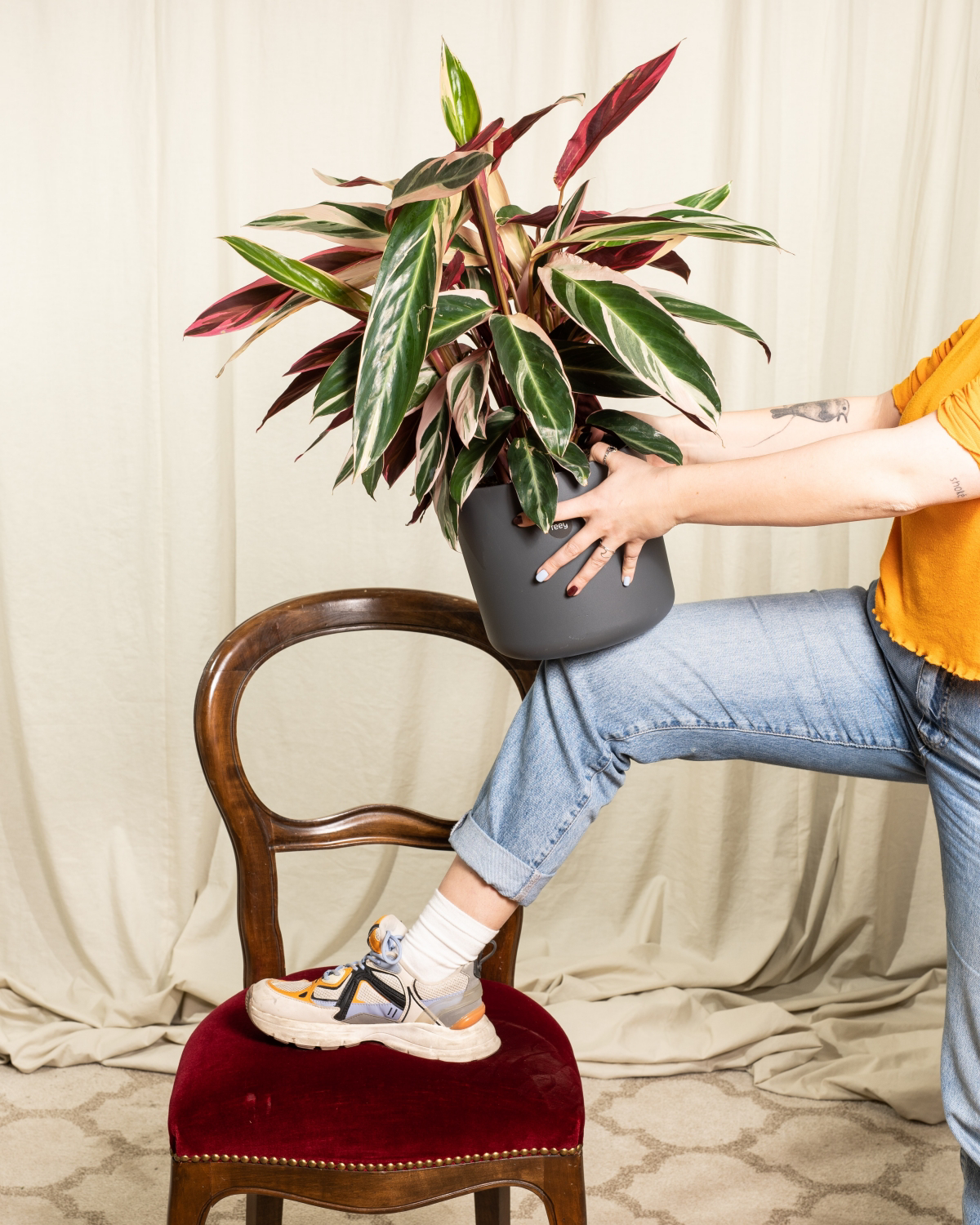
How to Water the Right Way
The goal is consistently moist soil, but never, ever soggy. Waterlogged soil leads to root rot, and that’s a tough thing to come back from. Don’t water on a schedule! Instead, stick your finger about an inch or two into the soil. If it feels dry, it’s time to water. If it’s still damp, wait another day or two.
I can’t recommend bottom watering enough for these plants. Here’s the simple method:
- Place the pot in a saucer, bowl, or even your sink.
- Fill the saucer with your good-quality water until it’s about a third of the way up the pot.
- Let the plant soak for 15-30 minutes. The soil will drink up exactly what it needs from the bottom.
- Once the top of the soil feels slightly damp, take it out of the water and let it drain completely. Never let it sit in a puddle.
By the way, the type of pot you use makes a HUGE difference. A porous terracotta pot breathes and dries out much faster than a plastic or glazed ceramic one. This isn’t a bad thing, it just means you’ll need to check the soil in a terracotta pot more frequently.
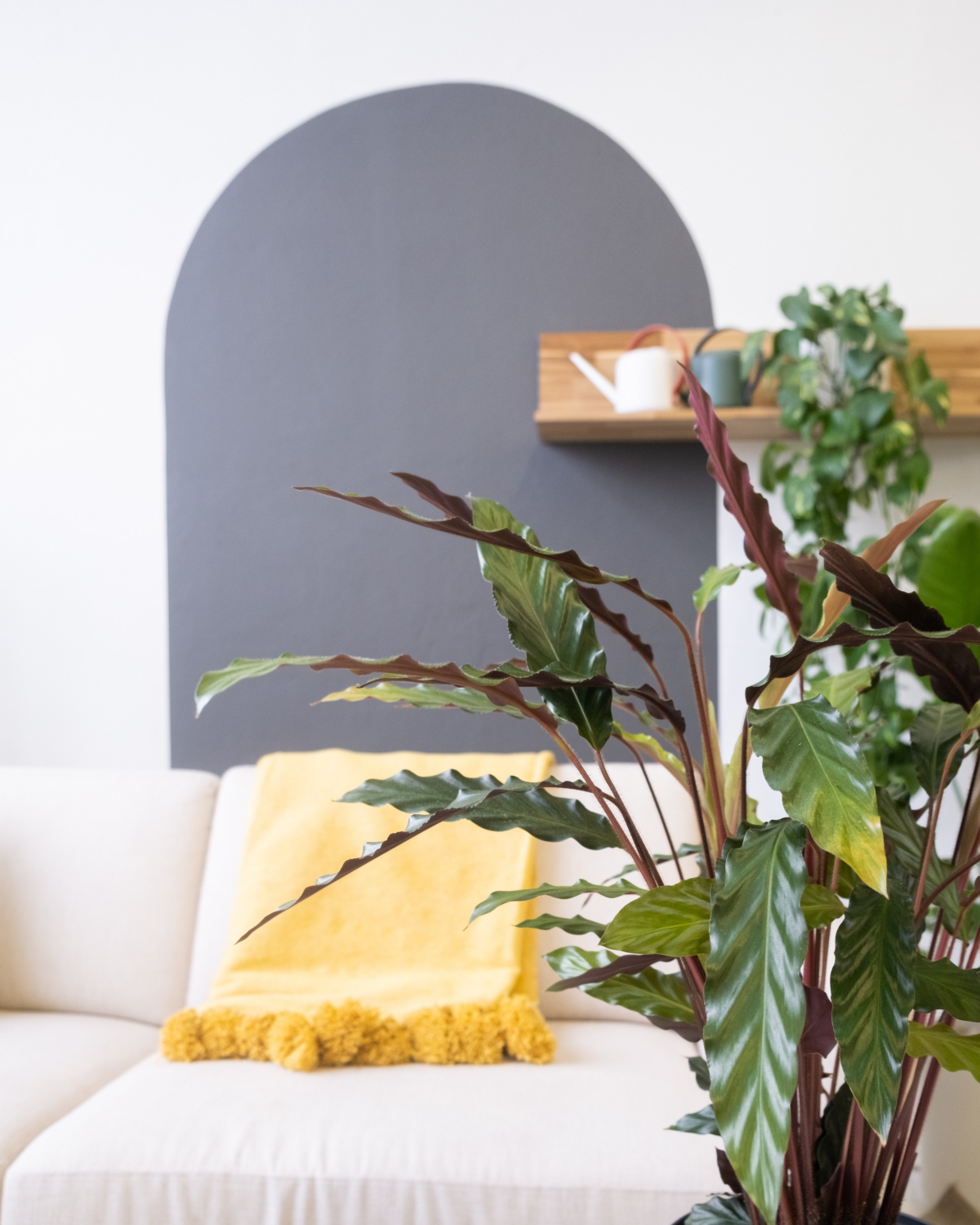
The Right Soil Mix (Bagged Soil Won’t Cut It)
Straight-out-of-the-bag potting mix is usually too heavy and dense for Calatheas. It holds too much water and doesn’t give the roots the oxygen they need. Over the years, I’ve perfected a mix that mimics that rich, airy rainforest floor. It’s the best insurance policy against overwatering.
My Go-To Calathea Soil Recipe:
- 3 parts coco coir or peat moss: This is your base for holding moisture. Coco coir is a great sustainable option.
- 2 parts perlite: Those little white rocks create air pockets for drainage and oxygen. A bag of this is usually cheap, maybe $5-$10, and it will last you forever.
- 1 part small-grade orchid bark: This adds structure and improves drainage even more.
- A handful of horticultural charcoal: This isn’t essential, but it’s a great bonus. It helps absorb impurities and keeps the soil from getting funky.
You can find perlite at most big box stores, but you might have to check a local garden center or go online to sites like Etsy for the orchid bark and charcoal. When you mix it all up, a handful should feel light and airy, not heavy and muddy.
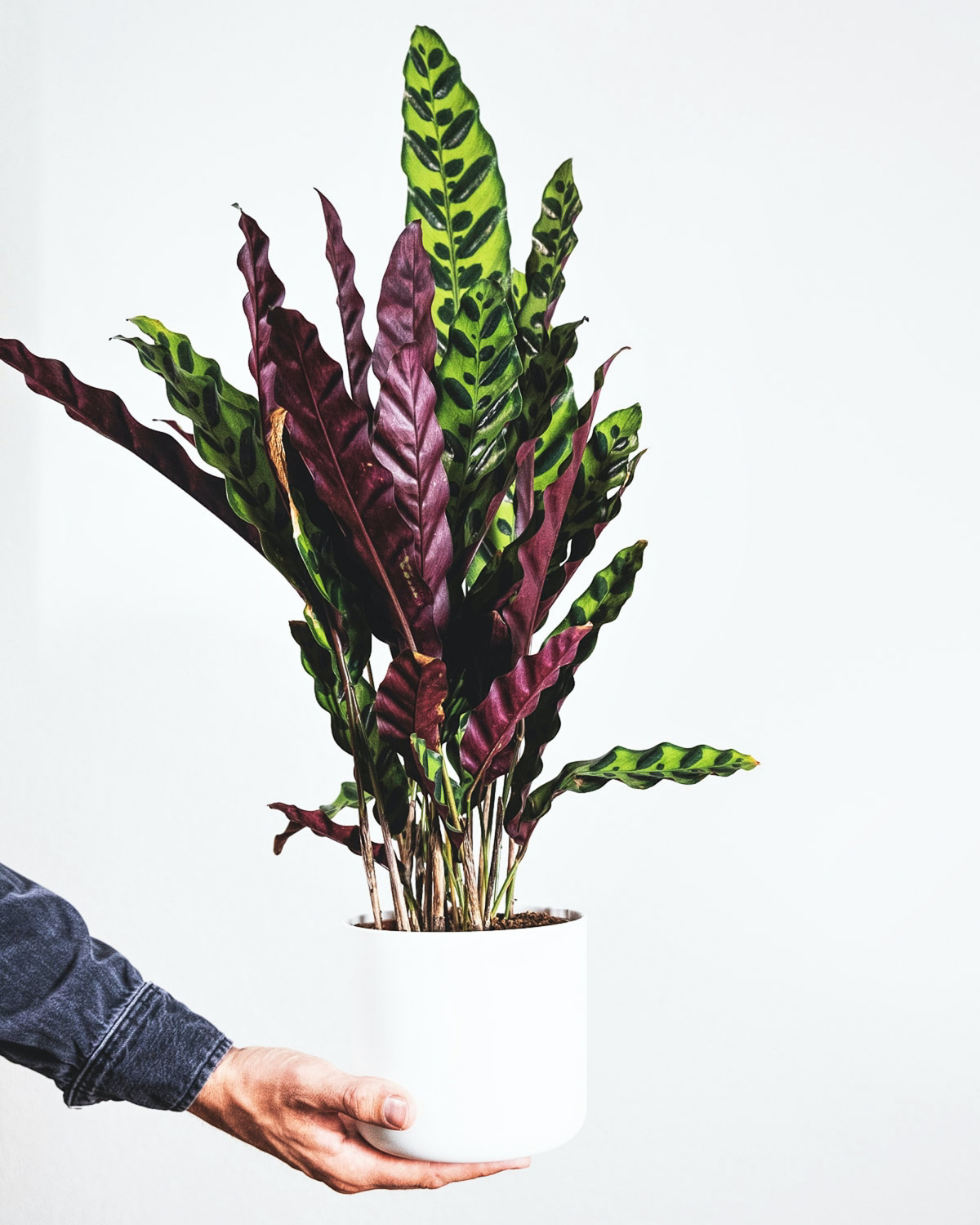
Repot your Calathea every year or two, or whenever it gets root-bound (that means you see roots circling the bottom of the pot or poking out of the drainage holes). Only go up one pot size—about 1-2 inches wider.
Light & Humidity: The Final Pieces of the Puzzle
In the rainforest, Calatheas live under a thick canopy of trees; they never get hit by direct sun. Your job is to copy that with bright, but always indirect, light.
- Perfect Spots: A few feet back from an east-facing window is usually the sweet spot. A north-facing window also works well. If you only have bright south or west windows, pull the plant way back into the room or hang a sheer curtain.
- Too Much Light? The vibrant leaf patterns will look faded or washed out.
- Not Enough Light? Growth will be slow and leggy, and the colors will look dull.
Humidity is just as critical. Your home is probably around 30-40% humidity, but these guys want 60% or more. This is the #1 cause of crispy leaf edges, period.
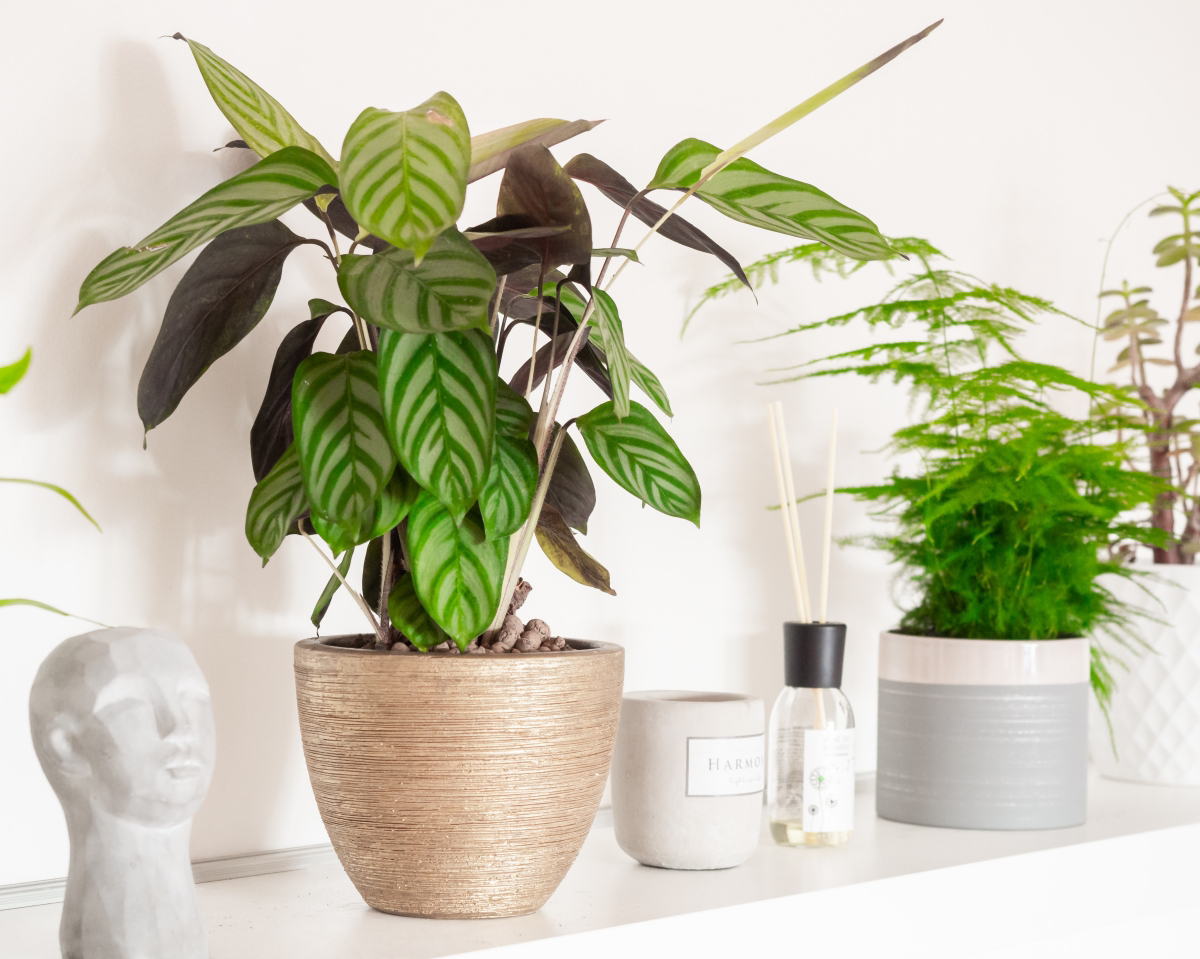
Misting and pebble trays are nice ideas, but to be frank, they don’t do much. The single best investment you can make is a small humidifier. You can find a perfectly good one for $30 to $60 online or at a department store, and it is a total game-changer. Grouping plants together also helps create a little humid microclimate.
Quick tip: Don’t have a humidifier yet? The easiest thing you can do RIGHT NOW is move your Calathea into your bathroom for a week (as long as it has a window for light). It will absolutely love the steam from your daily showers.
Let’s Talk About Food: The Deal with Fertilizer
It’s weirdly overlooked, but yes, you do need to feed your Calathea! That said, they aren’t heavy eaters. Over-fertilizing can burn their sensitive roots, leading to—you guessed it—brown, crispy leaf tips.
Here’s the simple rule: use a standard, balanced liquid houseplant fertilizer, but dilute it to half the strength recommended on the bottle. Feed your plant with this mixture once a month during the spring and summer, which is its main growing season. When fall and winter roll around, the plant goes dormant, so you should stop fertilizing completely until spring returns.
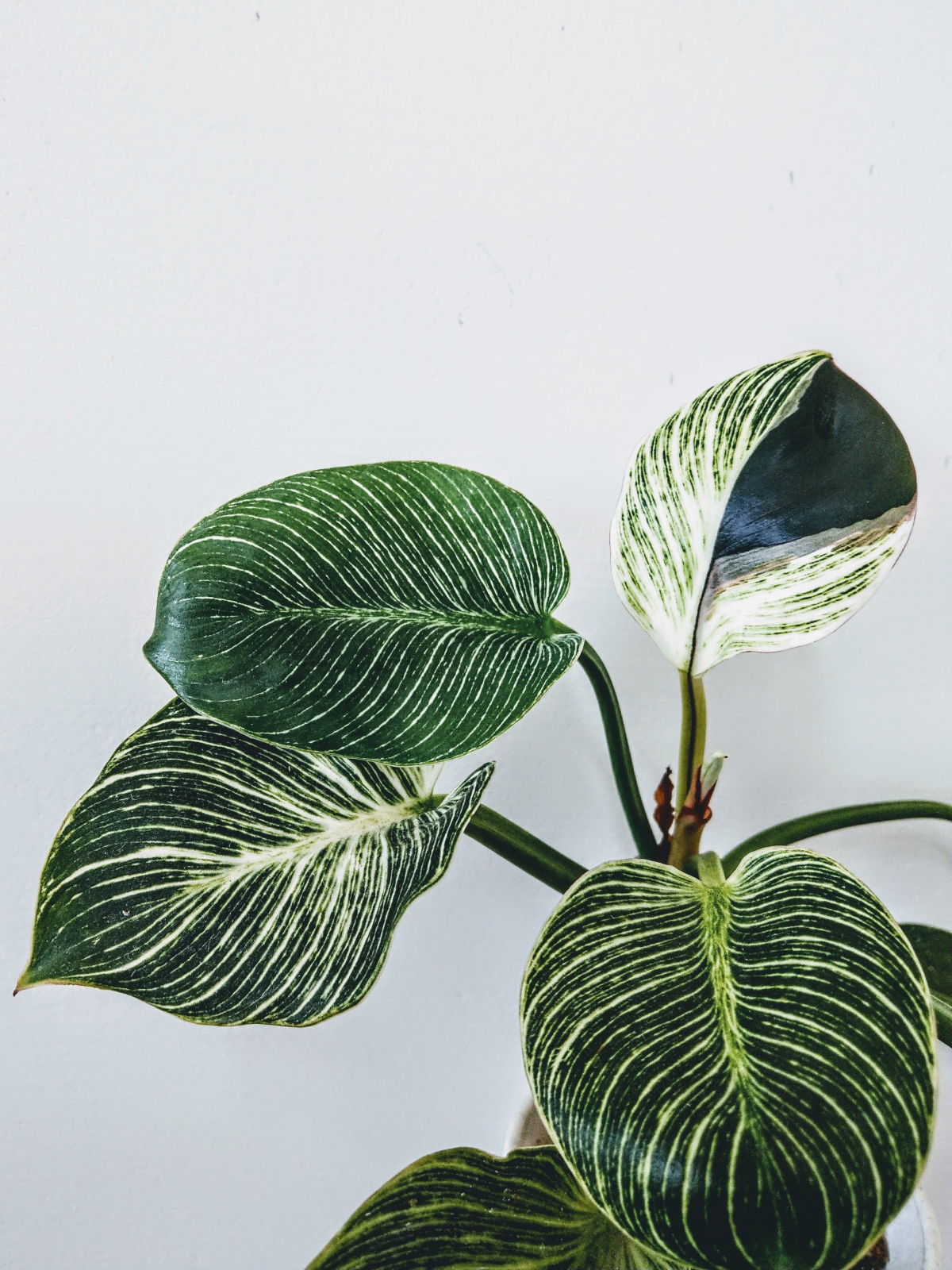
Which Calathea Should You Get? A Realistic Guide
While the care is similar, some varieties are way more forgiving than others. If you’re just starting out, please don’t grab the fanciest, most delicate one. Build your confidence first!
- Great Places to Start: The Rattlesnake Plant is a trooper and less prone to browning. The Peacock Plant and the ‘Network’ Calathea are also sturdy and reliable choices that will give you that classic Calathea look without all the stress.
- For When You’re Feeling Confident: The Pinstripe Calathea is stunning but needs consistent care. The big, round-leafed Orbifolia is a showstopper but will get brown edges in a heartbeat if the humidity drops or you use tap water.
- ‘Expert Mode’ Calatheas: The ‘White Fusion’ is the final boss. Its thin, white leaves are incredibly sensitive and will crisp up if you look at them wrong. This is not a beginner plant! The velvety ‘Warscewiczii’ is also very demanding and requires perfect conditions.
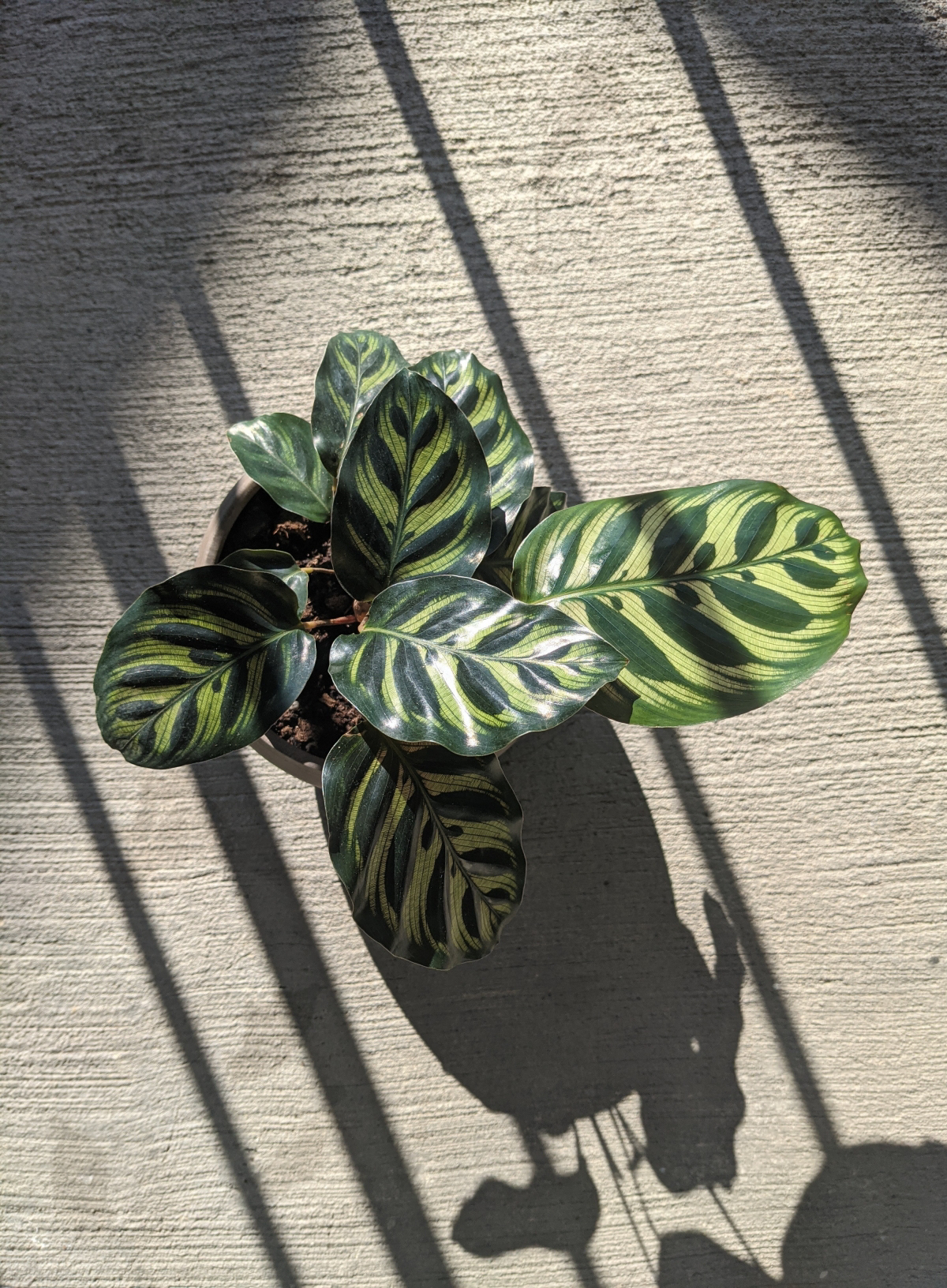
Troubleshooting Common Problems
Your plant will tell you what’s wrong. Here’s how to translate the signs:
- Problem: Crispy, brown leaf tips or edges.
Cause: 99% of the time, this is low humidity or bad water quality. Or both.
Solution: Switch to distilled/rainwater immediately and get a humidifier running near the plant. You can snip off the brown bits with clean scissors for aesthetics, but the damage won’t heal.
- Problem: Droopy or yellowing leaves.
Cause: This is where people get confused. First, feel the stems. If the leaves are curled AND the stems are limp, the plant is definitely thirsty. Give it a good, thorough drink. BUT… if the leaves are just droopy and the stems are still firm and upright, you’ve likely OVERWATERED it and the roots are starting to rot.
Solution: If you suspect rot, act fast. Take it out of the pot, check the roots for anything brown and mushy (healthy roots are firm and white/tan), and trim off any rot with sterile scissors. Repot in fresh, airy soil and go easy on the water until you see new growth.
- Problem: Faded leaf patterns.
Cause: Too much direct sun is bleaching the leaves.
Solution: Move it to a shadier spot. The color won’t return to the old leaves, but new ones will grow in with their proper, vibrant patterns.
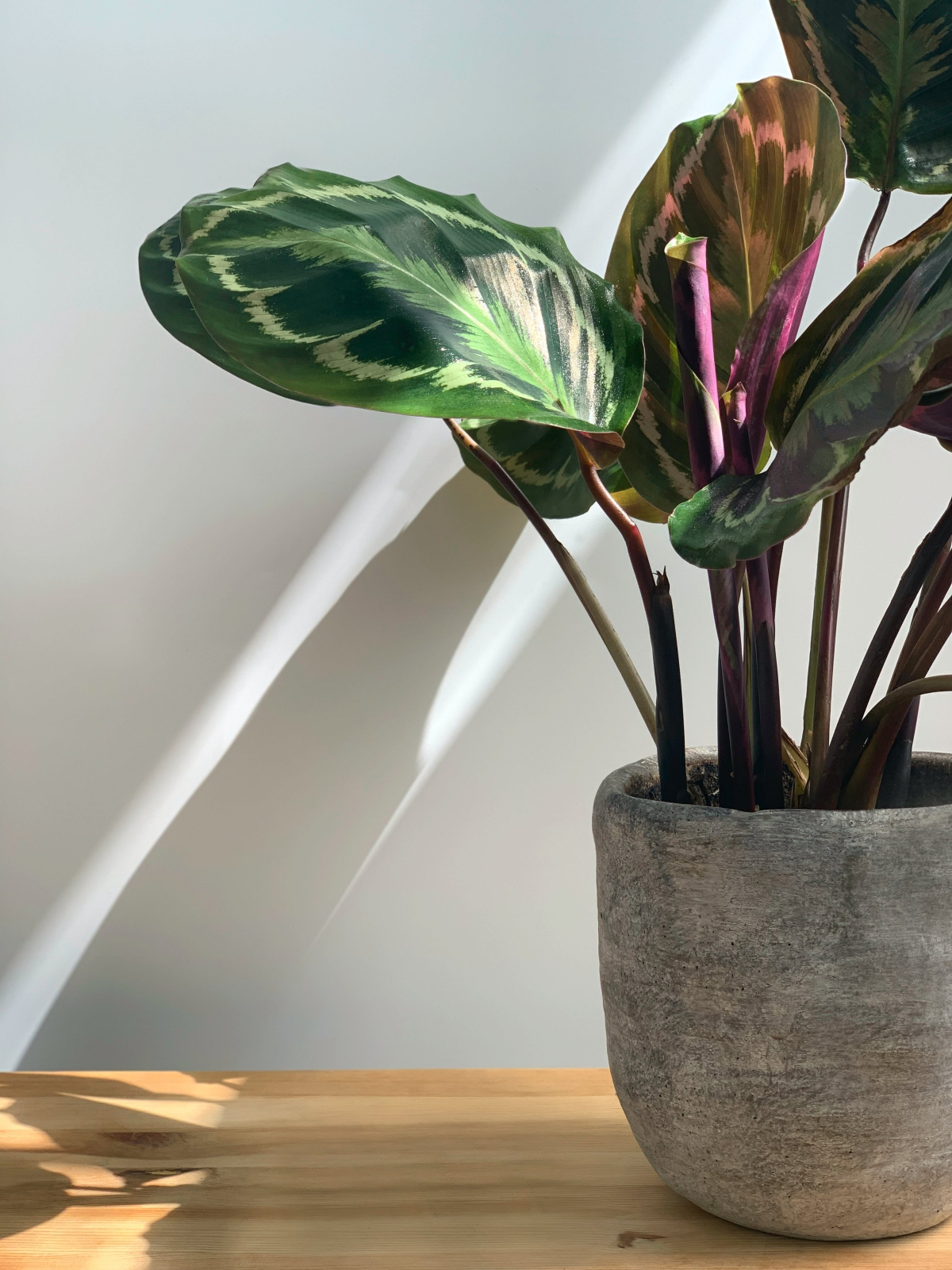
Keeping Pests Away
The number one enemy of the Calathea is the spider mite. These tiny pests love the exact dry conditions that Calatheas hate, so high humidity is your best defense. Check under the leaves weekly for fine, silky webbing. If you see it, isolate the plant immediately.
To treat them, give the plant a good shower, physically blasting them off. Then, spray the entire plant (top and bottom of leaves) with an insecticidal soap or a neem oil solution. Repeat this every 5-7 days for a few weeks to break their life cycle.
A Final, Important Note on Safety
One of the best things about this plant family is that they are completely non-toxic to cats, dogs, and people. So if you have curious pets or kids, this is an excellent and safe choice for your home. While you shouldn’t let your cat use it as a salad bar, you don’t have to panic if they take a nibble.
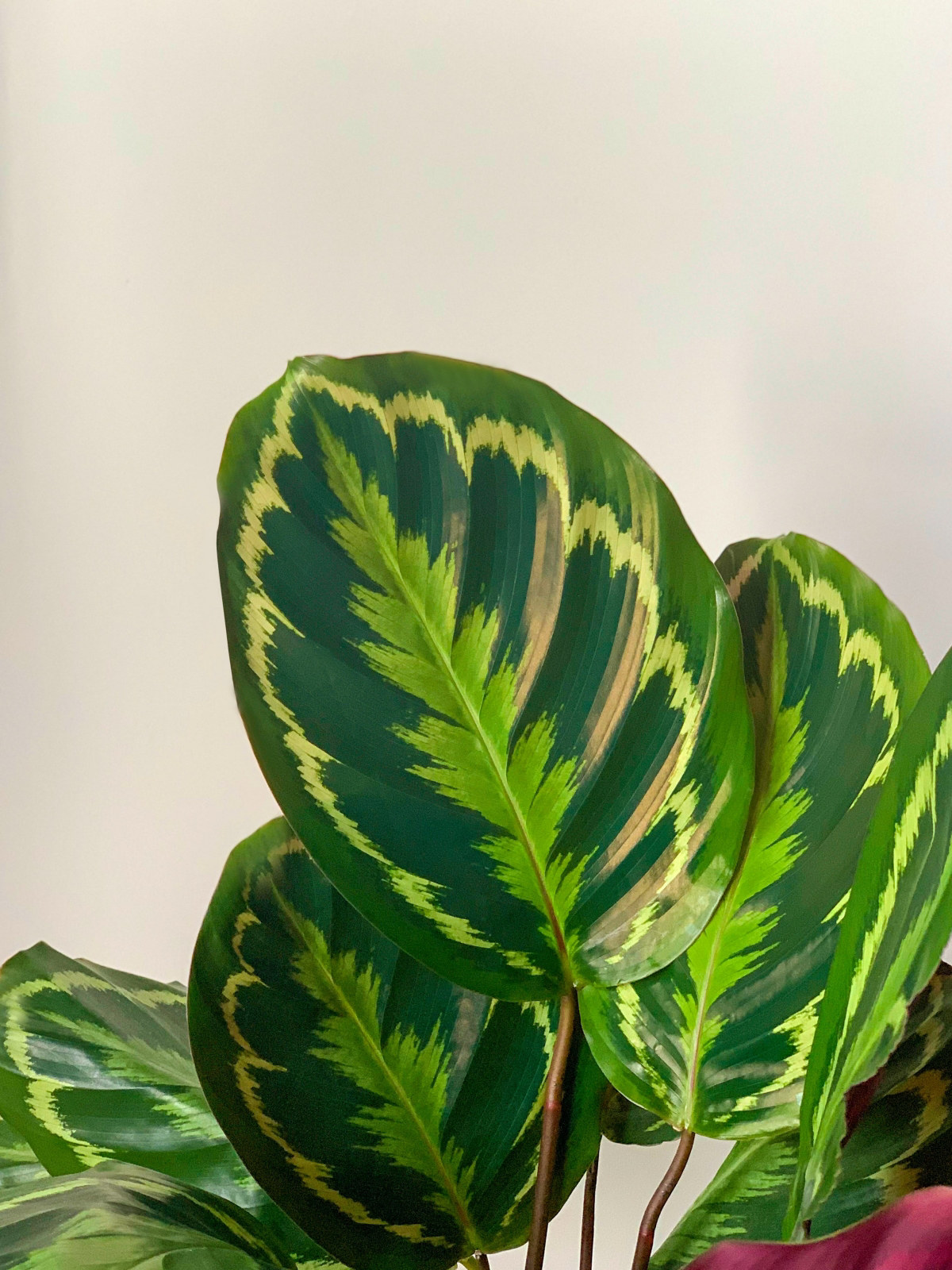
Look, caring for a Calathea is a skill. You’ll probably have a setback or two. But every crispy leaf is a lesson. Once you start providing that clean water, high humidity, and airy soil, you’re not fighting your plant anymore. You’re giving it a little piece of the rainforest, and it will thank you with some of the most beautiful foliage you’ve ever seen.
Galerie d’inspiration
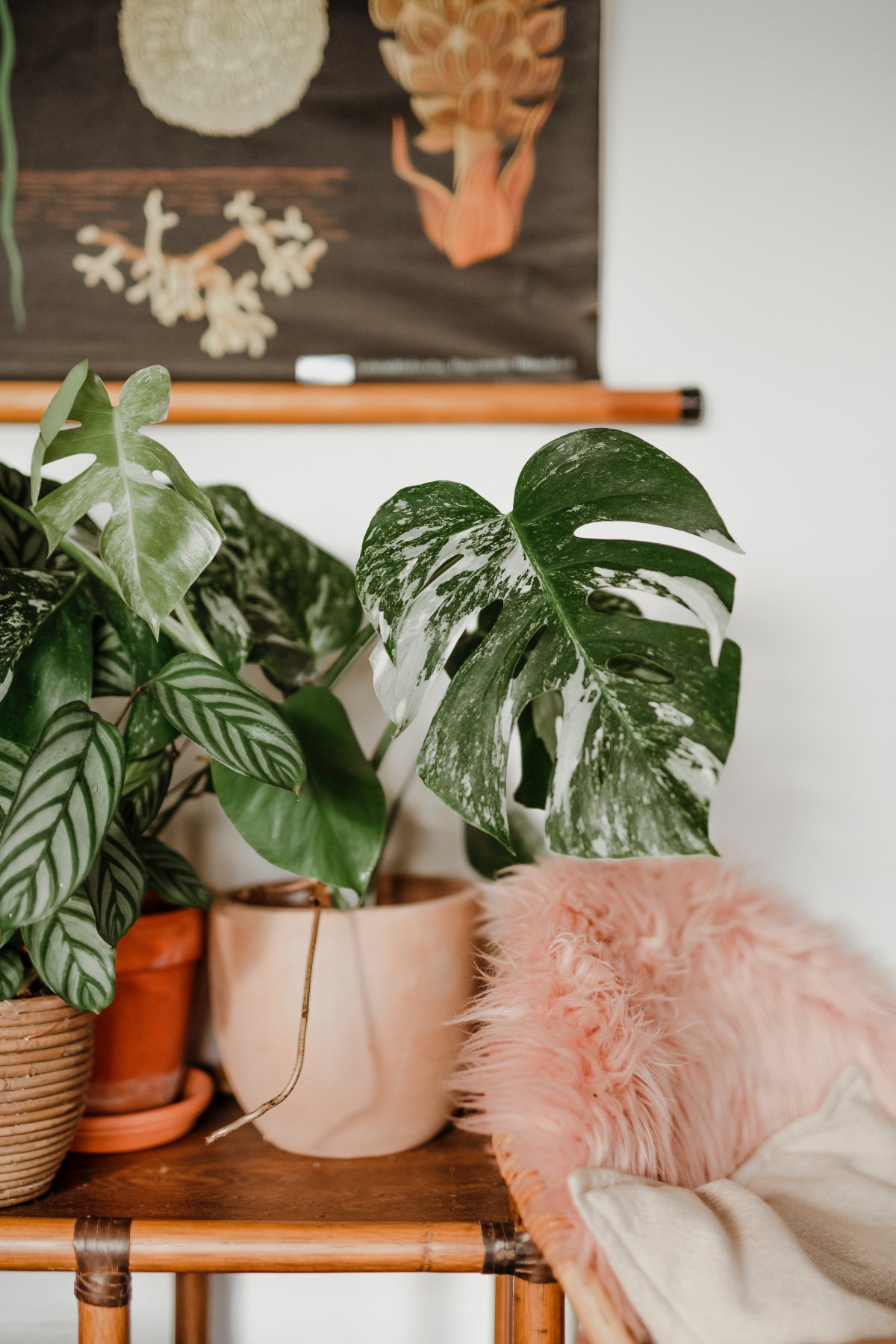
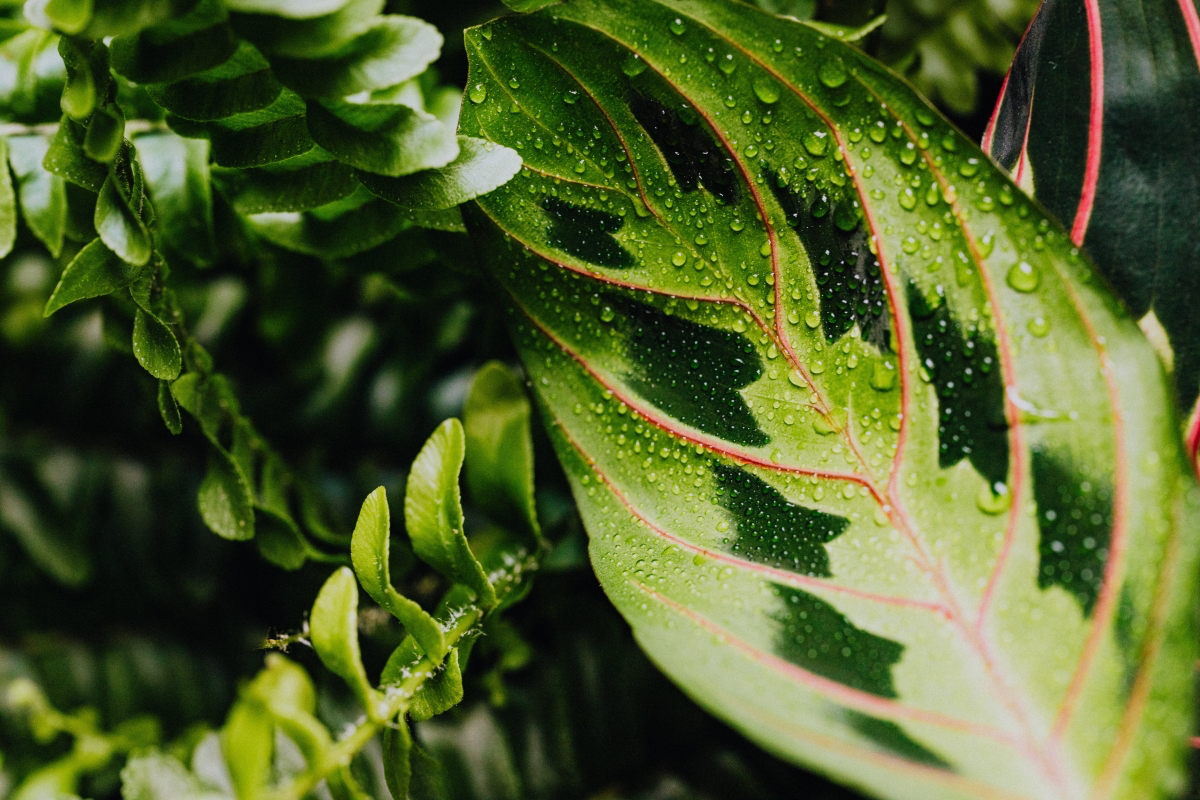
Beyond just watering, Calatheas breathe humidity. Creating a personal moisture bubble is easier than you think and is the secret to lush, unfurled leaves. Try these simple environmental boosts:
- Group Therapy: Cluster your Calatheas with other tropical plants. As they release moisture through transpiration, they create a humid microclimate for each other.
- The Pebble Tray Trick: Place your pot on a tray filled with pebbles and a little water. The water will evaporate upwards, directly benefiting the foliage without waterlogging the roots.
- A Spa Day: A weekly trip to the bathroom during a hot shower provides an intense, short-term humidity blast that they will adore.
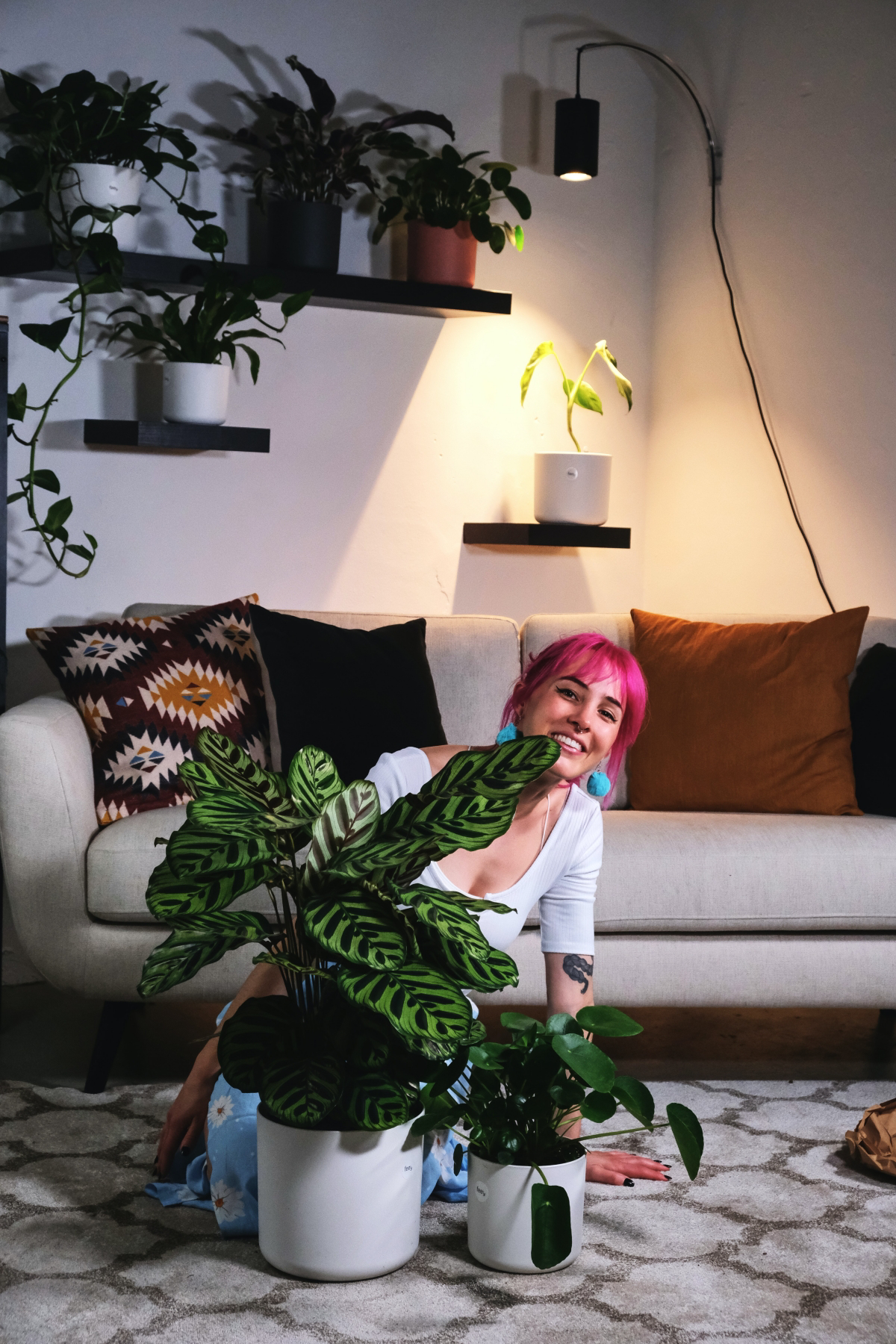
A single spider mite can lay up to 20 eggs per day, and a colony can form in a matter of weeks, especially in dry conditions.
This is why your Calathea’s environment is its first line of defense. These pests thrive in the dry air that Calatheas hate. Maintaining high humidity not only keeps your plant happy but makes it an inhospitable place for mites. As a preventative measure, gently wipe the front and back of each leaf with a damp cloth every couple of weeks. It cleans off dust and allows you to spot any intruders before they take hold.
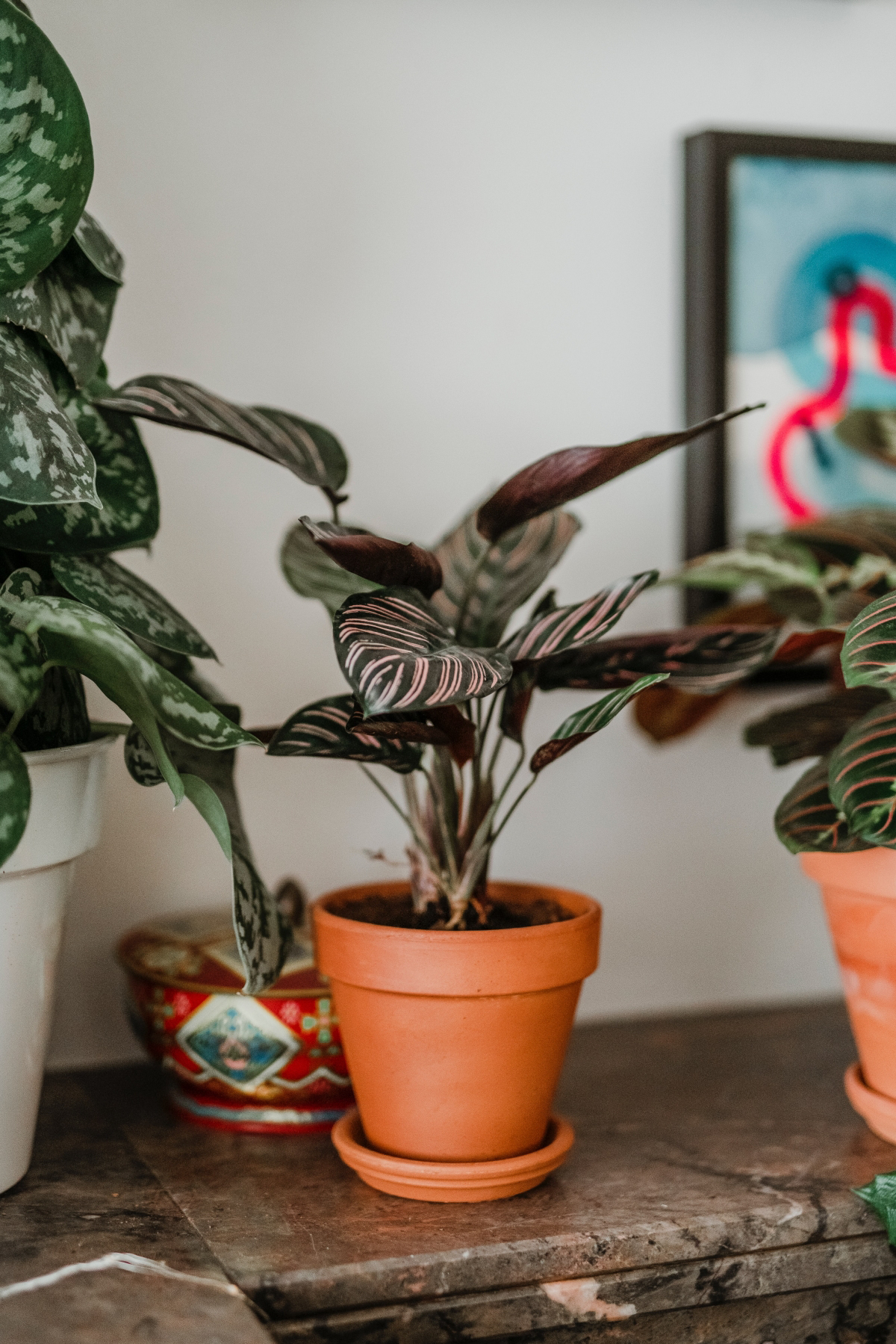
What kind of water is truly safe for a Calathea?
Tap water is often the silent culprit behind those dreaded crispy brown edges. It’s not the water itself, but the dissolved minerals, chlorine, and fluoride that accumulate in the soil over time, effectively burning the plant’s sensitive roots. The gold standard is rainwater or distilled water. For a more practical solution, a filter pitcher like a ZeroWater, which removes virtually all dissolved solids, can be a game-changer. If you must use tap water, let it sit out uncovered for at least 24 hours to allow some of the chlorine to evaporate.
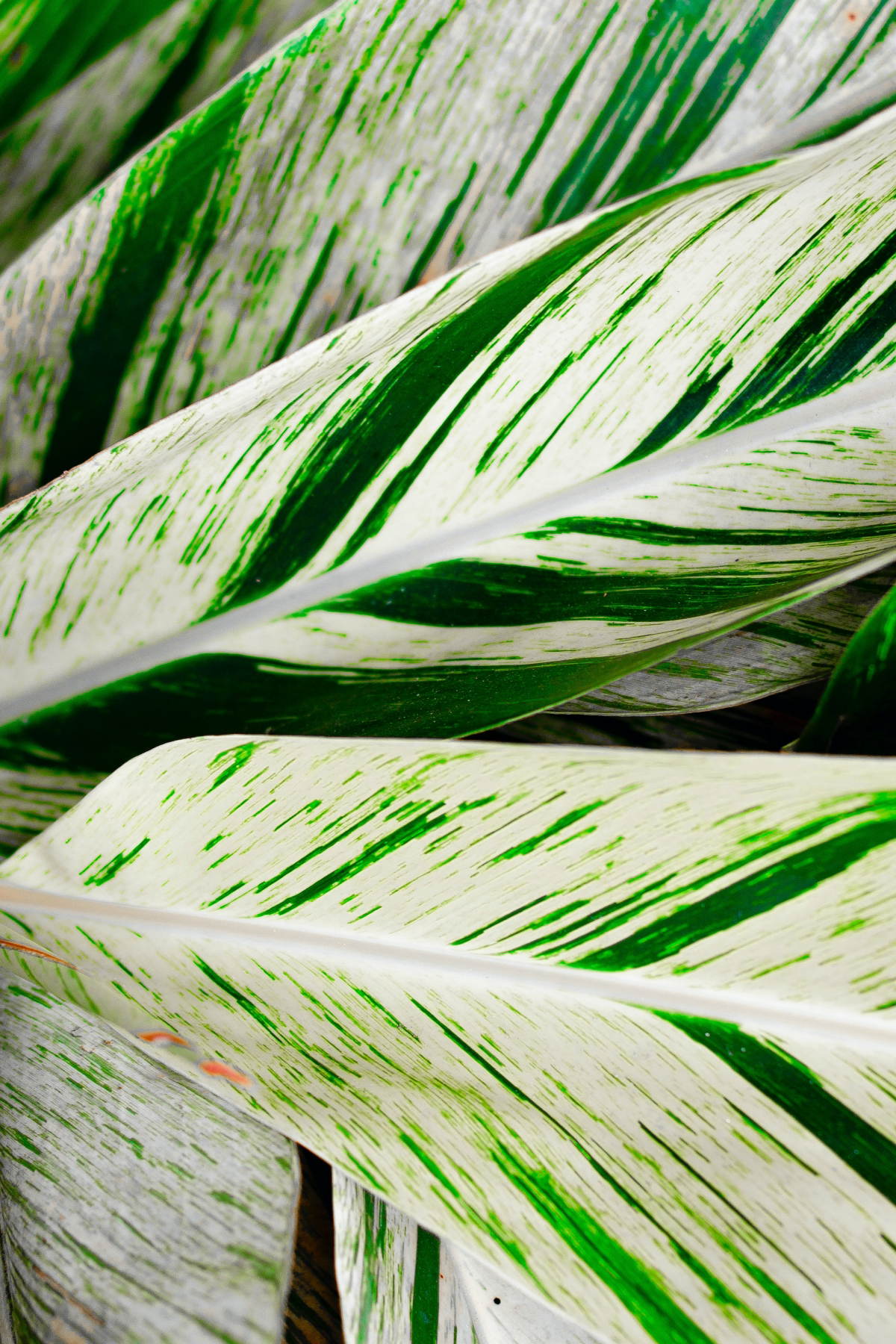
Standard Potting Mix: This is often too dense. It retains too much water, compacts easily, and can suffocate the fine, delicate roots of a Calathea, leading to root rot. It lacks the aeration these rainforest floor dwellers are accustomed to.
Aroid & Tropical Mix: This is the ideal choice. A blend of coco coir, orchid bark, perlite, and charcoal provides structure and excellent drainage while still holding onto the moisture Calatheas need. This mimics the loose, airy, nutrient-rich floor of their native habitat.
Your plant’s foundation matters; give its roots room to breathe.
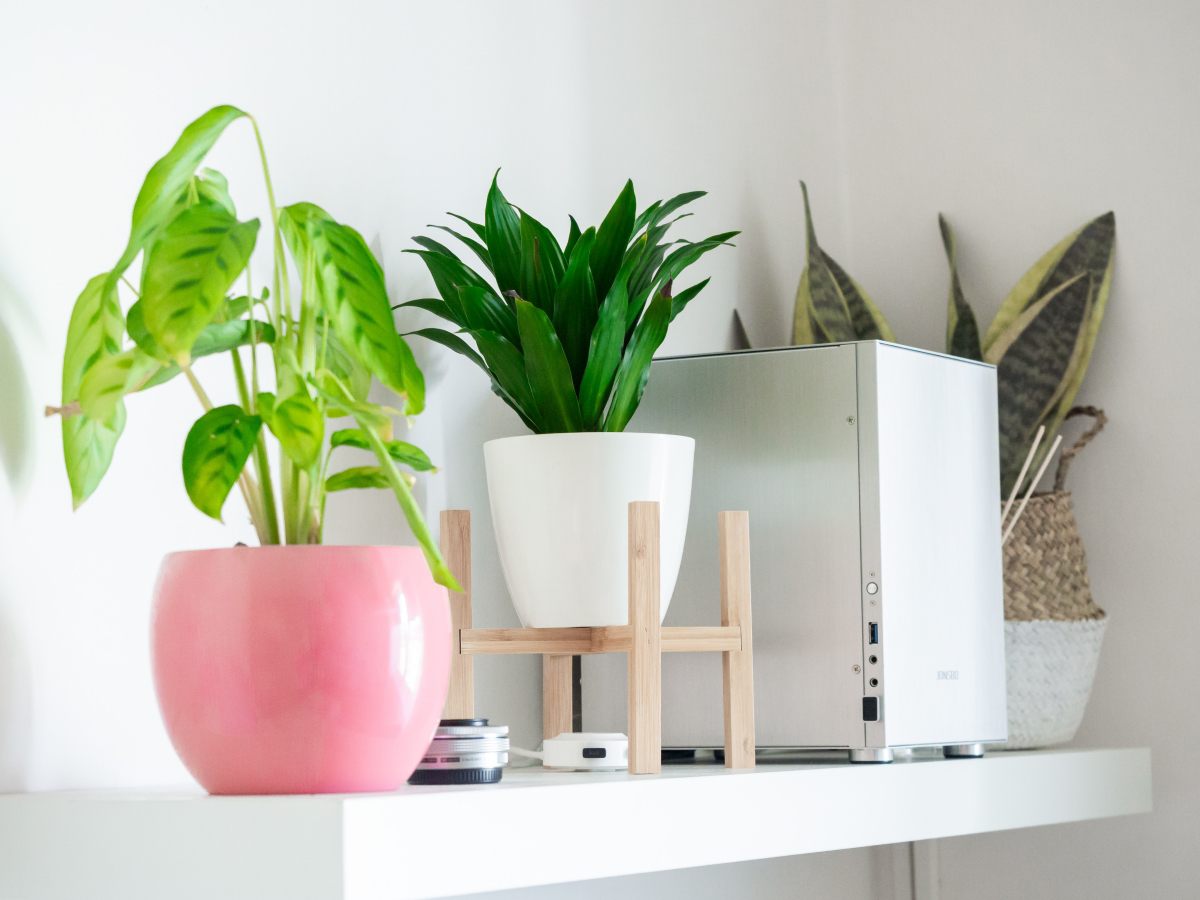
Think of your Calathea collection as a living art installation. The magic is in the mix of patterns and shapes. Pair the bold, painterly strokes of a Calathea roseopicta ‘Dottie’ with the delicate, feathery lines of a Calathea ‘White Fusion’. The height of a Rattlesnake Plant (Goeppertia insignis) can provide a stunning backdrop for the low, spreading habit of a Calathea rotundifolia. Grouping them not only boosts humidity but creates a dynamic display of nature’s artistry.
The forgotten detail: Your pot choice. A beautiful terracotta pot might seem like a great aesthetic fit, but it’s often a mistake for Calatheas. Terracotta is porous and wicks moisture away from the soil, causing it to dry out far too quickly for these moisture-loving plants. Stick to plastic or glazed ceramic nursery pots that retain consistent moisture levels, and then simply slip that functional pot inside a more decorative cachepot.










